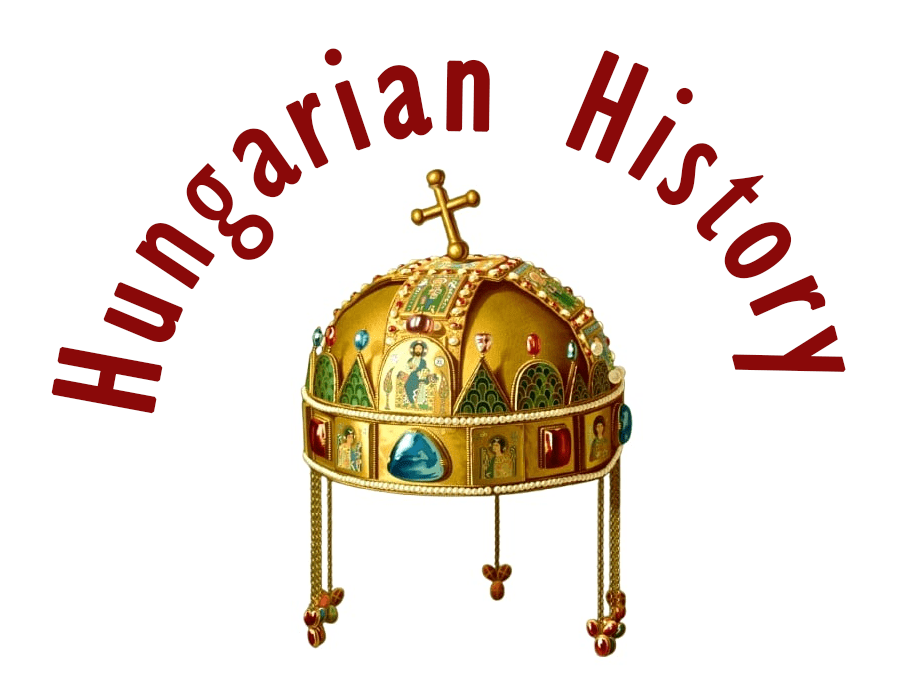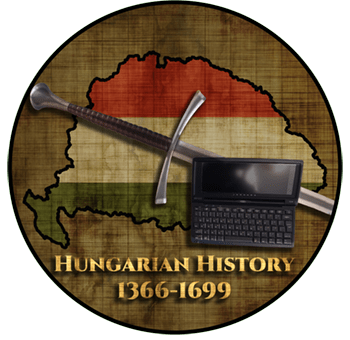Kassa

Kassa (Kosice, Kaschau) was the key city of the Eastern Upper Lands of the Kingdom of Hungary (called Uhorsko in Slovakian). It is located in the Upper lands/Horná Zem/Felvidék, in Slovakia. The town was first mentioned in 1230 and its fort in 1312. It became a free royal town in Hungary in 1347 and played a significant role in Hungarian history during the medieval time and after, too. For example, King Louis I held a Diet here in 1374. Here, we have just selected a few things from the rich history of this city. Location: https://tinyurl.com/2xy4aw9z

Kassa was a strong, fortified town. Lord Perényi Miklós tried to take the city by force in 1441, and even King Ulászló couldn’t take it that year. It was at Kassa that the Czech Giskra defeated the army of Székely Tamás in 1449. Prince Albert of Poland couldn’t take the town, either, in 1491, not even after a half-year siege.
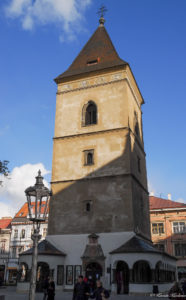
Yet, the city opened its gates before the usurper King Ferdinand I in 1526. During the sad years of the Dual Kingship, the German burghers of the town tended to support the Habsburgs. They called King Szapolyai “canis rex” (dog-king) and opened the gates before the German mercenaries of Hans Katzianer. Also, they placed a prize on the head of Szapolyai.
King Szapolyai could not allow having such a dangerous center of resistance in the middle of his part of the country, so he sent an army. The city was taken on 4 December 1536. The king’s general, Czeczey Lénárd, led the army; he was the most faithful follower of the White Monk, Brother György. (Later, Brother György became the one who established the basement of the Principality of Transylvania, acting as the foster father of Szapolyai’s son.) Czeczey was appointed as the captain of Kassa, and we could identify his renowned Slovakian officer who was his right hand, János/Jan Zadorla. Read more about him here:
https://www.hungarianottomanwars.com/essays/janos-zadorla-a-slovakian-hero-of-kassa/

When Szapolyai’s men became the masters in Kassa, they punished the German burghers who had been hostile against King Szapolyai. Czeczey immediately began to arrest the German members of the city council and took the city away from them. Those Germans who openly opposed the new rule were banned from the town, and Hungarians were settled in those who came from the southern territories that lay in the throat of the Turks. Yet, the price of their properties (lands and houses) was paid to them in cash upon leaving.
The Hungarians were gaining more and more power as their numbers were growing. Also, many Hungarian noblemen fled to Kassa from the expanding Ottoman Empire. Czeczey has done much to reinforce the city. He hired soldiers and supplied the city with food and weapons. To do so, he seized the mines in the area. He also had many cannons cast. His riders were constantly raiding around, and they attacked the city near Kassa, Eperjes (Prjesov), in the summer of 1539.

I can’t resist making a historical parallel between the dispelling of these Germans in 1536 and the dispelling of Hungarians in 1945. It was Gustav Husak, in charge of Kassa after WWII, who took part in creating the so-called Kosice Program that included the mass punishment of Germans and Hungarians of Slovakia, calling them war criminals. According to the order of the communist Husak, later First Secretary of the Communist Party of Czechoslovakia between 1969 and 1987, the Hungarians had to be humiliated in public.
Before their deportation to Hungary, the Hungarians of Kassa had to wear a red “M” letter on their coat that indicated them as “Magyar,” aka Hungarian. Of course, none of them has received any kind of compensation for their confiscated houses and land to this very day, including my own family. I feel it all the more shameful because I am Slovakian on my father’s side.

The commander of King Habsburg Ferdinand, Tomasso Lascano, came against Kassa, but Czeczey snared them in a trap and defeated the German army. After the death of King Szapolyai, Brother György confirmed Czeczey’s position as a Chief Captain of Kassa, a position he held for 15 years. According to the Truce of Nyírbátony in 1551, Kassa had to return to King Ferdinand. Queen Isabella (Szapolyai’s widow) resigned, too, and the Habsburg ruler obtained Kassa.

Yet, the Chief Captain did not wish to serve Ferdinand, so he resigned from his title and wanted to leave the country with Isabella, but he couldn’t do so because he died at the end of 1551. He was buried in Kassa. Tinódi Lantos Sebestyén, a famous poet and singer of his age, wrote about Czeczey’s death in his song:
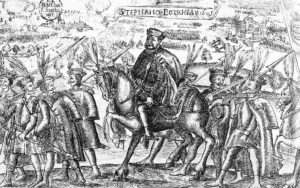
However, Prince Bocskai István occupied it in 1604 and turned it into his headquarters. As a result of this, the town had been part of the Transylvanian Principality in the 17th century for a long time. Although the Habsburgs regained it for a short time, Prince Bethlen Gábor of Transylvania took it in 1619 with the help of Lord Rákóczi György, his strongest supporter. Here was held Bethlen’s wedding, and he issued his proclamations from here. It was the town of the princes in the 17th century.

We have to mention the famous Saint Erzsébet Cathedral of the city and its huge bell: it was said that the great bronze bell of Kassa could be heard from as far as Eger city. When the city was taken by Rákóczi for Prince Bethlen, it was when three Jesuits (Pongrátz István, Grodecz Menyhért, and Kőrösi Márk) were nastily murdered despite the promise had been made for them that they could go away freely.
Allegedly, Alvinczi Péter, the Protestant preacher of the city, had demanded their heads along with the death of all the Catholics of Kassa. Alvinczi was the greatest Reformed preacher and the legendary enemy of Archbishop Pázmány Péter. One of the executed priests happened to be Pázmány’s dear friend.

Anyway, the savage Hajdú soldiers of Rákóczi tortured the Jesuits to find out where their gold was hidden and who might have been members of a Catholic conspiracy. After two days of starving them, they were offered some raw liver to eat before their execution – but being a Friday, they couldn’t accept the food. Two of them were beheaded, and the third was thought to be dead and thrown into the cesspit where he died twenty hours later.
Some circumstances and motives are not clear, but the murders very well could have happened with the 23-year-old Rákóczi’s and Prince Bethlen’s knowledge, and this raises questions in me concerning the famous religious freedom of Transylvania (as far as Catholics were concerned).

After all, it turns out that being a Catholic was not such a safe thing in the Principality. Half a year later, the peace talks between Prince Bethlen and Palatine Pálffy Zsigmond (who acted on behalf of the Habsburg king) were taking place in the same house where the martyrs had been executed. Upon reaching an agreement, they held a great feast, and Prince Bethlen asked the wife of the Palatine, Lady Pálffy Katalin, for a dance.
She was willing to dance only under the condition that the martyred priests could get a decent burial. It was grudgingly agreed, provided the burial would happen at night. We know that Bethlen made further compensations some years later when he wed the Catholic Catherine of Brandenburg, who had demanded it.
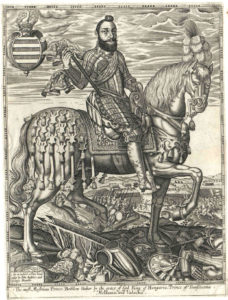
We know a Jesuit office in Kassa led between 1632 and 34 by Dániel Vásárhelyi. The victims’ corpses were finally carried to a nunnery of Poor Claires in Nagyszombat, where Lady Forgách Mária, the daughter of the Palatine, was the Abbess in 1635. In 1905, the martyrs were canonized by the Catholic church as the Martyrs of Kassa. Their day in the Catholic calendar is September 7, when they were killed.

Prince Rákóczi György I of Transylvania marched in Kassa on 12 March 1644
It is a little known fact that Bethlen Gábor was not the only Transylvanian prince to join the fighting of the Thirty Years’ War (1618-1648) as a combatant. Under the terms of an agreement concluded with Swedish envoys on 16 November 1643, Rákóczi intended to send troops to the Swedish troops stationed in Moravia in the spring of the following year, who were preparing to besiege Vienna.

In the beginning, things went well: the troops of the Prince and the Rákóczi family marched simultaneously towards the eastern counties of the Kingdom of Hungary, and one of their greatest achievements was the capture of Kassa. In the outskirts of the city, raiding troops appeared frequently as early as the last days of February, and the presence of Transylvanian troops was increasingly felt as the Prince approached.

Forgách Ádám and Kassa finally decided to surrender, and the city was captured on 10 March. The entry of Rákóczi György I took place two days later, on 12 March 1644. Soon, Rákóczi György was declared the prince of Transylvania in 1644 in Kassa. The situation must have improved during Prince Rákoczi György’s rule because he allowed the existence of a Jesuit mission in Kassa.
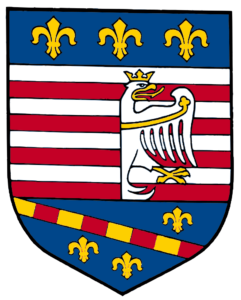
Kassa was the center of the northern defense against the Ottomans but they could never take it. The Jesuits established a printing house and a high school in Kassa in 1657. The anti-Habsburg Kuruc troops besieged the town several times in the 1670s but in vain. Unrest was growing against the Habsburgs, and the city rebelled. Finally, the Habsburgs took the rebellious Kassa by force in 1677 and executed the Kuruc leaders. Before, the Austrians had built a fort opposing Kassa, to the south, between 1670 and 1676.

Prince Thököly Imre took Kassa in 1682, but General Carprara beat his troops out in 1685. The city opened its gates to Prince Rákóczi Ferenc in 1703 and repelled the attack of General Rabutin in 1706. It was only occupied in 1711 when the War of Independence of Rákóczi was put down.

Dear Readers, I can only make this content available through small donations or by selling my books or T-shirts.
Please, feel free to support me with a coffee here:
You can check out my books on Amazon or Draft2Digital. They are available in hardcover, paperback, or ebook:
https://www.amazon.com/dp/198020490X or at https://books2read.com/b/boYd81

My work can also be followed and supported on Patreon: Become a Patron!http://Become a Patron!

